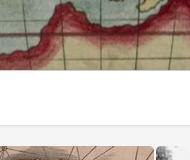The World Digital Library (WDL) is a project of the U.S. Library of Congress, carried out with the support of the United Nations Educational, Cultural and Scientific Organization (UNESCO), and in cooperation with libraries, archives, museums, educational institutions, and international organizations from around the world.
The WDL makes available on the Internet, free of charge and in multilingual format, significant primary materials from all countries and cultures.
The principal objectives of the WDL are to:
- Promote international and intercultural understanding;
- Expand the volume and variety of cultural content on the Internet;
- Provide resources for educators, scholars, and general audiences;
- Build capacity in partner institutions to narrow the digital divide within and between countries.
This Site
The WDL makes it possible to discover, study, and enjoy cultural treasures and significant historical documents on one site, in a variety of ways. Content on the WDL includes books, manuscripts, maps, newspapers, journals, prints and photographs, sound recordings, and films.
WDL items can be browsed by place, time, topic, type of item, language, and contributing institution. The search feature can be used to search all of the metadata and descriptions and the full text of printed books on the site.
Each item on the WDL is accompanied by an item-level description that explains its significance and historical context. Additional information about selected items is provided by curator videos. Other features include advanced image-viewing, timelines, interactive maps, and in-depth thematic sections on selected topics (in preparation).
All navigation tools, bibliographic information (also known as metadata), and content descriptions are provided in seven languages: Arabic, Chinese, English, French, Portuguese, Russian, and Spanish. Metadata and descriptions can be listened to on a text-to-voice conversion option that is available for every item in all seven interface languages.
Content on the WDL is selected by partner institutions in accordance with guidelines set by the WDL Content Selection Committee. Content is chosen for its cultural and historical importance, with due regard to recognition of the achievements of all countries and cultures over a wide range of time periods.
Books, manuscripts, maps, and other primary materials on the site are not translated but presented in their original languages. More than 100 languages are represented on the WDL, including many lesser known and endangered languages.



















